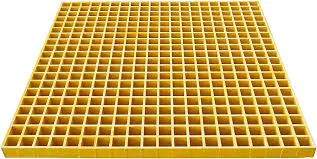
-
 Afrikaans
Afrikaans -
 Albanian
Albanian -
 Amharic
Amharic -
 Arabic
Arabic -
 Armenian
Armenian -
 Azerbaijani
Azerbaijani -
 Basque
Basque -
 Belarusian
Belarusian -
 Bengali
Bengali -
 Bosnian
Bosnian -
 Bulgarian
Bulgarian -
 Catalan
Catalan -
 Cebuano
Cebuano -
 China
China -
 China (Taiwan)
China (Taiwan) -
 Corsican
Corsican -
 Croatian
Croatian -
 Czech
Czech -
 Danish
Danish -
 Dutch
Dutch -
 English
English -
 Esperanto
Esperanto -
 Estonian
Estonian -
 Finnish
Finnish -
 French
French -
 Frisian
Frisian -
 Galician
Galician -
 Georgian
Georgian -
 German
German -
 Greek
Greek -
 Gujarati
Gujarati -
 Haitian Creole
Haitian Creole -
 hausa
hausa -
 hawaiian
hawaiian -
 Hebrew
Hebrew -
 Hindi
Hindi -
 Miao
Miao -
 Hungarian
Hungarian -
 Icelandic
Icelandic -
 igbo
igbo -
 Indonesian
Indonesian -
 irish
irish -
 Italian
Italian -
 Japanese
Japanese -
 Javanese
Javanese -
 Kannada
Kannada -
 kazakh
kazakh -
 Khmer
Khmer -
 Rwandese
Rwandese -
 Korean
Korean -
 Kurdish
Kurdish -
 Kyrgyz
Kyrgyz -
 Lao
Lao -
 Latin
Latin -
 Latvian
Latvian -
 Lithuanian
Lithuanian -
 Luxembourgish
Luxembourgish -
 Macedonian
Macedonian -
 Malgashi
Malgashi -
 Malay
Malay -
 Malayalam
Malayalam -
 Maltese
Maltese -
 Maori
Maori -
 Marathi
Marathi -
 Mongolian
Mongolian -
 Myanmar
Myanmar -
 Nepali
Nepali -
 Norwegian
Norwegian -
 Norwegian
Norwegian -
 Occitan
Occitan -
 Pashto
Pashto -
 Persian
Persian -
 Polish
Polish -
 Portuguese
Portuguese -
 Punjabi
Punjabi -
 Romanian
Romanian -
 Russian
Russian -
 Samoan
Samoan -
 Scottish Gaelic
Scottish Gaelic -
 Serbian
Serbian -
 Sesotho
Sesotho -
 Shona
Shona -
 Sindhi
Sindhi -
 Sinhala
Sinhala -
 Slovak
Slovak -
 Slovenian
Slovenian -
 Somali
Somali -
 Spanish
Spanish -
 Sundanese
Sundanese -
 Swahili
Swahili -
 Swedish
Swedish -
 Tagalog
Tagalog -
 Tajik
Tajik -
 Tamil
Tamil -
 Tatar
Tatar -
 Telugu
Telugu -
 Thai
Thai -
 Turkish
Turkish -
 Turkmen
Turkmen -
 Ukrainian
Ukrainian -
 Urdu
Urdu -
 Uighur
Uighur -
 Uzbek
Uzbek -
 Vietnamese
Vietnamese -
 Welsh
Welsh -
 Bantu
Bantu -
 Yiddish
Yiddish -
 Yoruba
Yoruba -
 Zulu
Zulu
frp panel
Understanding FRP Panels A Comprehensive Overview
Fiber Reinforced Polymer (FRP) panels have emerged as a revolutionary material in various industries, including construction, automotive, aerospace, and marine applications. Combining the properties of polymer matrices with reinforcing fibers, FRP panels offer superior strength-to-weight ratios, corrosion resistance, and design flexibility. This article delves into the composition, benefits, applications, and future of FRP panels.
Composition and Structure
FRP panels are primarily composed of a polymer matrix, typically epoxy, polyester, or vinyl ester, reinforced with fibers such as glass, carbon, or aramid. The fibers provide tensile strength, while the polymer imparts durability and resistance to environmental factors. The unique manufacturing processes, such as pultrusion, filament winding, and resin transfer molding, allow for the creation of customized panels tailored to specific needs and performance requirements.
Benefits of FRP Panels
1. Durability One of the standout features of FRP panels is their exceptional durability. Unlike traditional materials, such as wood or metal, FRP does not corrode, rust, or degrade when exposed to harsh environmental conditions. This makes them ideal for outdoor applications and environments prone to moisture.
2. Lightweight FRP panels are significantly lighter compared to metal or concrete alternatives. This lightweight characteristic simplifies transportation and installation processes, ultimately reducing labor costs and timeframes in construction projects.
3. High Strength-to-Weight Ratio Despite being lightweight, FRP panels exhibit impressive strength-to-weight ratios, making them suitable for applications requiring both strength and reduced bulk.
frp panel

4. Insulation Properties FRP panels provide excellent thermal and electrical insulation. This feature is particularly advantageous in the construction and automotive sectors, where temperature control and energy efficiency are paramount.
5. Versatility These panels can be manufactured in various shapes, sizes, and colors, allowing for extensive design flexibility. This makes them suitable for both functional and aesthetic applications, from building facades to interior design elements.
Applications of FRP Panels
FRP panels are used in a wide range of industries due to their remarkable properties. In the construction industry, they are commonly employed in roofing, wall cladding, and flooring systems. Their resistance to moisture makes them ideal for applications in wastewater treatment facilities, food processing plants, and chemical storage.
In the transportation sector, FRP panels are increasingly used in vehicles, boats, and trains, contributing to reduced weight and improved fuel efficiency. Additionally, the aerospace industry utilizes FRP for aircraft components, enhancing performance while ensuring compliance with strict safety regulations.
Future of FRP Panels
The demand for lightweight and durable materials continues to rise, propelling the growth of the FRP panel market. Innovations in manufacturing techniques and the development of new composite materials are expected to expand the range of applications. Furthermore, the integration of smart technologies into FRP panels—such as sensors for structural health monitoring—could revolutionize how these materials are used in critical infrastructures.
In conclusion, FRP panels represent a significant advancement in material science, offering numerous advantages over traditional materials. Their durability, strength, lightweight nature, and versatility make them a preferred choice in various applications. As technology evolves and environmental concerns drive innovation, the future of FRP panels looks promising, potentially shaping the next generation of high-performance materials.
Latest news
-
Exploring the Benefits of Top Hammer Drifter Rods for Enhanced Drilling PerformanceNewsJun.10,2025
-
High-Precision Fiberglass Winding Machine for GRP/FRP Pipe Production – Reliable & Efficient SolutionsNewsJun.10,2025
-
FRP Pipes & Fittings for Shipbuilding - Corrosion-Resistant & LightweightNewsJun.09,2025
-
Premium FRP Flooring Solutions Durable & Slip-ResistantNewsJun.09,2025
-
Premium Fiberglass Rectangular Tanks Durable & Lightweight SolutionNewsJun.09,2025
-
Tapered Drill String Design Guide Durable Performance & UsesNewsJun.09,2025









